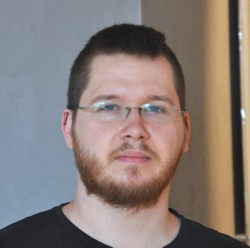
Project FirstTEAM
„Monolityczna integracja wielokolorowych matryc mikro- i nano-LEDów”
Project Value: 3 991 975,00 zł
The value of the contribution from European Funds: 3 991 975,00 zł
Project description
The project's goal is to create a technology for manufacturing monolithically integrated, addressable micro- and nano-LED arrays emitting visible light. Micro-LED arrays will find wide applications in bright, high-resolution displays, wireless Li-Fi communication, and augmented and virtual reality glasses. Applications for nano-LED arrays include optogenetics, super-resolution microscopy, maskless photolithography, and chemical and biomedical sensors. The developed technology will enable the stacking of LED arrays, emitting light at different wavelengths, one on top of the other. The proposed device will enable individual powering of each micro-emitter in each array.
The micro-LED market is one of the fastest-growing industries in the world. Today, its size is estimated at $1.1 billion, with an annual growth rate (CAGR) of approximately 80%. This is a shockingly high rate driven by consumer demand. Potential recipients of the technology being developed within the project include companies manufacturing semiconductor light emitters, particularly those based on gallium nitride (GaN).
The technology being developed within the project is based on the growth of thin crystalline (Al,In)GaN layers using molecular beam epitaxy and advanced processing methods. The heart of the proposed solution are tunnel junctions, which, when grown directly on the light-emitting layer, change the conductivity type and allow for the growth of another layer emitting light at a different wavelength.
As part of the project, the purchase of a dual germanium and silicon effusion cell is planned, which will enable the production of more efficient tunnel junctions. Additionally, a measurement system for micro-electroluminescence with the ability to measure micro-photoluminescence is planned, which is essential for testing micro- and nanoscale emitting devices.

Zespół badawczy
Zespół badawczy projektu FIRST-TEAM:
- dr hab. inż. Grzegorz Muzioł - Główny Wykonawca
- mgr inż. Krzesimir Nowakowski-Szkudlarek
- mgr inż. Mateusz Hajdel
- inż. Szymon Lach
- dr inż. Mateusz Słowikowski
- mgr Sooraj Nhaloor


Nowakowski-Szkudlarek 

Lach 
Słowikowsi
Nhaloor
Publikacje
Projekt realizowany w latach 2024-2029